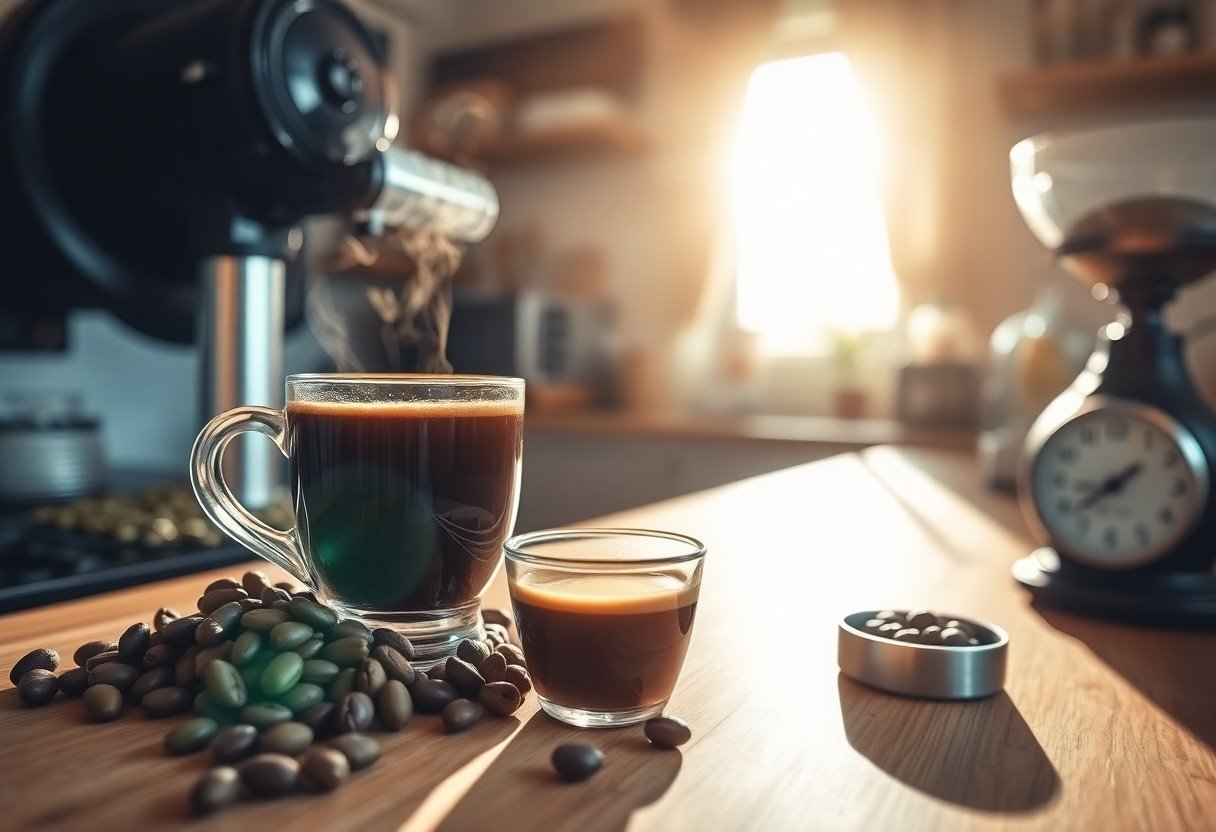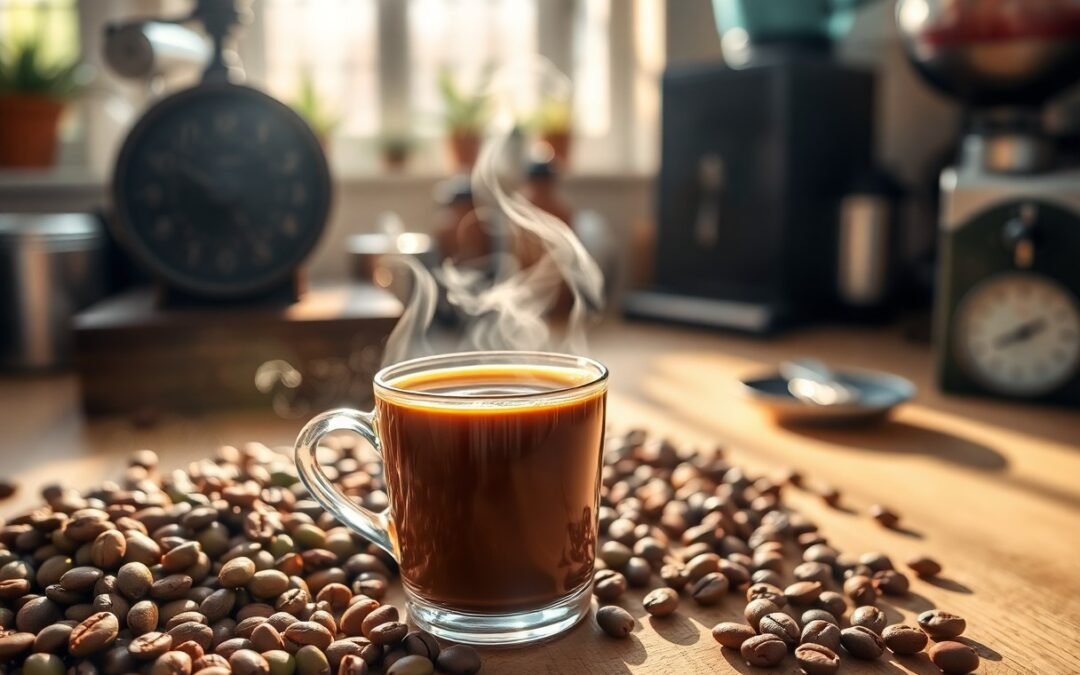Many coffee enthusiasts seek ways to enhance their morning ritual, and self-roasting specialty coffee offers a perfect solution. In this guide, you will learn how to transform your mornings by choosing the right beans, mastering the roasting process, and brewing a cup that truly reflects your taste preferences. By following these simple steps, you’ll not only enjoy exceptional coffee but also take pride in the craftsmanship behind each delightful brew, turning your daily caffeine fix into a personalized art form.
Understanding Specialty Coffee
For coffee enthusiasts, understanding specialty coffee is the first step toward an elevated morning experience. Specialty coffee refers to high-quality beans that score 80 points or above on a 100-point scale, showcasing unique flavors and attributes derived from specific growing conditions, processing methods, and meticulous handling. Exploring specialty coffee involves discerning the nuanced characteristics that differentiate each type, leading you to a richer and more rewarding coffee ritual.
What Makes Coffee Specialty?
There’s a significant difference between regular coffee and specialty coffee, primarily defined by its quality, flavor profile, and production methods. Specialty coffee undergoes rigorous standards in growing, harvesting, and processing, ensuring that each bean can offer a unique tasting experience. By understanding these elements, you can appreciate the artistry behind each cup and elevate your morning routine to new heights.
The Importance of Bean Selection
Assuming you want to enjoy the finest cup of coffee, the selection of beans plays an integral role in your experience. Specialty coffee beans are often sourced from specific regions known for their unique terroirs, which contribute distinct flavors. By choosing beans that align with your taste preferences, you set the foundation for a delightful brewing experience that can transform your mornings.
What you should know is that not all coffee beans are created equal. Specialty coffee often comes from single-origin farms or specific varietals that are cultivated with care. Factors such as altitude, climate, and soil quality significantly influence the bean’s flavor profile. Investing time in choosing the right beans will not only enhance your brewing experience but also contribute to a deeper appreciation of the craft behind specialty coffee.
The Art of Roasting Coffee
Some people see coffee roasting as a simple task, but it truly is an art form that can transform ordinary beans into a rich, aromatic experience. Understanding the nuances of roasting allows you to craft a flavor profile that perfectly suits your taste buds. From the first crack to the desired roast level, mastering this process will enhance your mornings and elevate your coffee enjoyment.
Home Roasting Methods
Roasting green coffee beans at home can be as simple or as intricate as you want it to be. You can start with basic methods like using a skillet, an air popcorn popper, or even a specific home coffee roaster designed for this purpose. Each method offers a unique way to control heat and roasting time, allowing you to experiment and find what delights your palate.
Equipment You’ll Need
Roasting your own coffee requires some vital equipment to ensure you achieve the best results. Basic items include a heat source, like a stovetop or dedicated coffee roaster, as well as a cooling tray for the beans post-roast. You may also want a scale to measure your beans accurately and a timer to keep track of roasting durations for consistency.
For instance, if you choose to use a popcorn popper, you will need to ensure it can achieve the right temperatures without causing any burnt flavors. Alternatively, investing in a dedicated coffee roaster may provide you with greater control over the roasting process, allowing you to easily adjust factors like air flow and temperature for optimal results. This equipment sets the foundation for delving deeper into the art of coffee roasting.
How to Roast Coffee Beans
If you have ever dreamed of sipping a freshly brewed cup of coffee made from beans you roasted yourself, the journey begins with understanding how to roast coffee beans. For insights on refining your morning ritual, check out Calling All Early Birds: Perfecting Your Morning Coffee Ritual.
Step-by-Step Roasting Process
On your journey to roasting coffee beans, follow this straightforward process:
| Step | Description |
|---|---|
| 1 | Choose high-quality green coffee beans. |
| 2 | Preheat your roaster or pan. |
| 3 | Add beans and stir continuously. |
| 4 | Listen for the first crack to assess roast progression. |
| 5 | Cool beans rapidly to halt the roasting process. |
Monitoring Roast Levels
Even the slightest change in time or temperature can significantly affect your coffee’s flavor, so monitoring roast levels is vital. You’ll want to watch for key indicators like color changes and audible cracks, each signifying various roast profiles.
This attentive observation not only enables you to achieve your desired roast level but also enhances your skills over time. As you progress, experiment with roast times and techniques to discover the flavors that resonate with your palate, ultimately crafting a cup of coffee that’s uniquely yours.
Flavor Factors in Coffee
Many factors contribute to the rich and diverse flavors found in coffee. It’s necessary to consider the following elements:
- Origin of the beans
- Processing methods
- Roast levels
- Brewing techniques
- Freshness of the coffee
This understanding allows you to appreciate the nuanced tastes present in your cup of coffee.
Impact of Roast Levels on Flavor
Assuming you are familiar with different roast levels, you’ll discover how they influence the flavor profile of your coffee. Light roasts typically feature bright acidity and pronounced origin characteristics, whereas dark roasts often present a fuller body with deeper, more intense flavors. Finding the right roast level for your palate can enhance your overall coffee experience.
Origin and Its Role in Taste
Roast plays a significant role in how the origin of coffee beans affects taste. Each coffee-growing region imparts its unique characteristics due to factors like altitude, soil composition, and climate. For example, Ethiopian coffees are often floral and fruity, while Brazilian coffees tend to be nutty and chocolaty. Understanding these regional flavors helps you select the perfect coffee to match your preferences.
Flavor nuances in coffee are shaped from various geographic locations across the globe. For example, coffees grown in Central America may exhibit a bright acidity and sweetness, while those from Africa may have more vibrant fruit notes. The combination of different varieties and their specific environmental conditions creates a rich tapestry of tastes within your coffee. By exploring these origins, you can fine-tune your coffee selection to find the profiles you truly enjoy.

Brewing Your Self-Roasted Coffee
After roasting your specialty coffee beans, it’s time to unlock their full potential through brewing. The method you choose can significantly influence the flavors and aromas of your coffee, allowing you to experience the nuances of your self-roasted creation. Consider experimenting with various brewing techniques to find your ideal cup. Whether using a French press, pour-over, or espresso machine, the right brew can elevate your mornings to new heights of enjoyment.
Best Brewing Methods
You can explore a variety of brewing methods to find the perfect match for your self-roasted coffee, each highlighting different flavor profiles. French press offers a full-bodied experience, while pour-over allows for clarity and precision. Espresso machines provide a concentrated shot, while siphon brewing introduces a theatrical element to your mornings. Each technique has its own charm, so try them all to discover your favorite.
Enhancing Flavor Profiles
Little adjustments in your brewing technique can make a world of difference in your coffee’s flavor profile. Factors such as water temperature, brew time, and grind size all play a significant role in extracting the best elements from your self-roasted beans. Small tweaks in these areas can help emphasize the unique characteristics and intricacies of your unique roast.
Plus, the water you use can also affect the final taste of your brew. Using filtered or distilled water will ensure that any impurities don’t interfere with the flavor of the coffee. Experimenting with different grind sizes will also allow you to explore other notes of flavor hidden within your beans. You might find that coarser grinds work well for certain methods while fine grinds excel in others. Don’t hesitate to play with various parameters to refine the taste profile that resonates best with you.
Tips for the Perfect Morning Brew
Keep your mornings fresh and vibrant by mastering the art of brewing. Here are some key tips to enhance your experience:
- Use fresh, specialty coffee beans.
- Opt for filtered water for a cleaner taste.
- Invest in a quality grinder.
- Fine-tune your brewing temperature.
- Experiment with different brewing methods.
Recognizing these factors can transform your daily coffee routine into a delightful ritual.
Finding Your Ideal Brew Ratio
You can optimize your brew by determining the right coffee-to-water ratio. Typically, a standard who enjoys specialty coffee might find a ratio between 1:15 to 1:18 (coffee to water) ideal. Start experimenting within this range, adjusting based on your personal taste preferences, strength requirements, and the specific coffee beans you’re using. Fine-tuning this ratio will help you achieve a perfectly balanced cup every time.
Pairing with Breakfast Options
Perfect your morning by pairing your coffee with delicious breakfast options that enhance the experience. Consider options like buttery croissants, hearty oatmeal, or savory avocado toast, which can complement the flavors of your freshly brewed coffee. The key is to find balance; a bold roast might pair best with creamy or rich meals, while lighter coffees can harmonize beautifully with fresh fruit and pastries.
Brew yourself the best possible morning spread by exploring a variety of breakfast pairings. Try a rich espresso alongside a slice of banana bread, or perhaps a pour-over coffee with your favorite yogurt and berries. Each pairing enhances the flavor profile of your coffee while offering a satisfying start to your day. You’ll discover that the right accompaniment not only elevates your coffee experience but also turns your morning into a delightful feast for the senses.
1. Select fresh specialty coffee beans from a trusted source.
2. Roast beans evenly using a home roaster or pan.
3. Cool beans quickly to preserve flavor and aroma.
4. Grind roasted beans just before brewing for freshness.
5. Brew coffee with precise water temperature and ratio.
6. Enjoy your aromatic, flavorful morning coffee ritual.
To wrap up
With these considerations, you can transform your mornings into a delightful ritual by mastering the art of self-roasting specialty coffee. By selecting quality beans, experimenting with roasting profiles, and perfecting your brewing techniques, you’ll elevate your coffee experience. This journey not only enhances your taste but also deepens your appreciation for the craft. Embrace the process, and enjoy each cup as a reflection of your efforts, bringing warmth and joy to your mornings.

